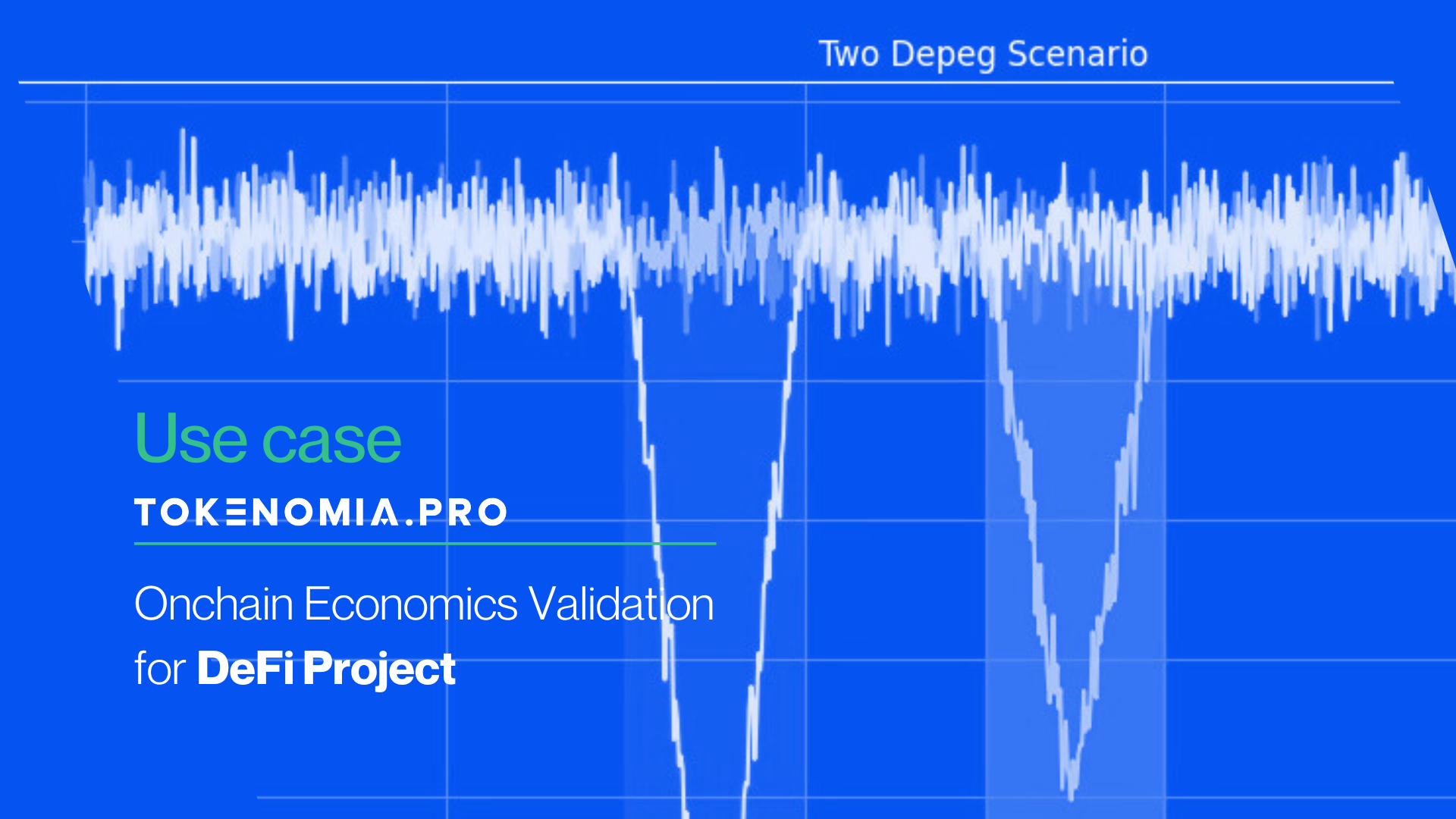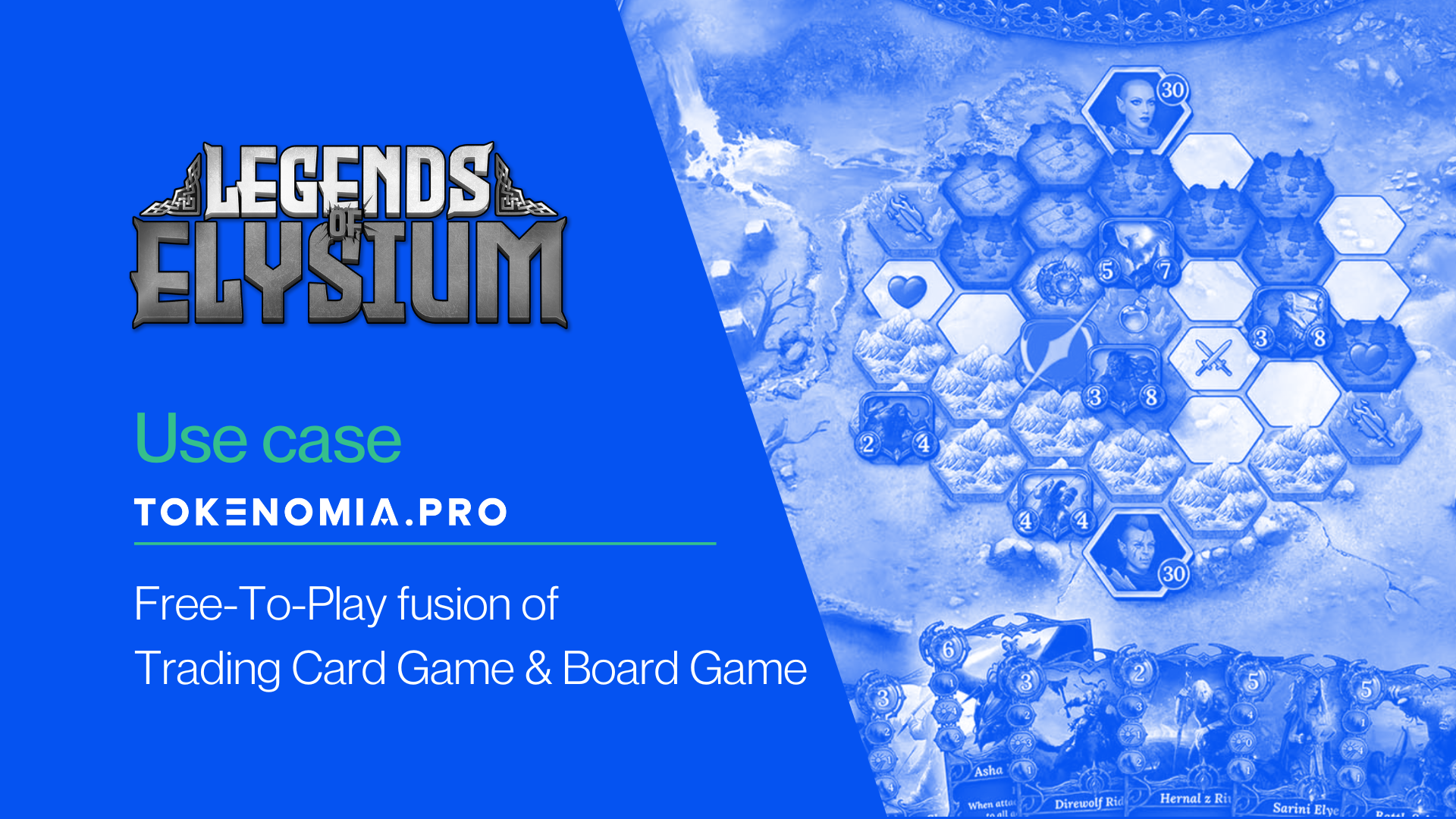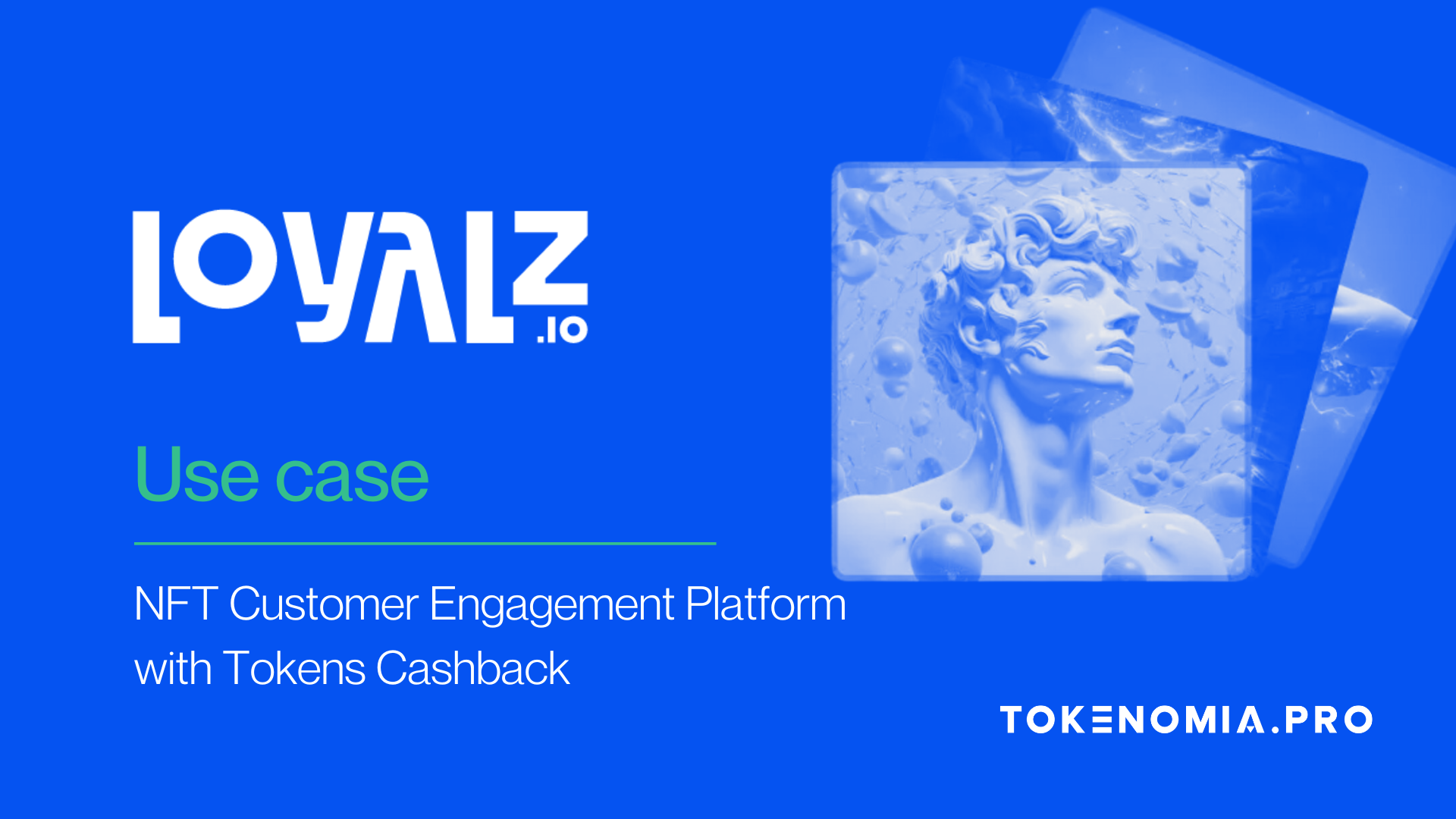 19 minutes read
19 minutes readTable of contents
DePIN – Decentralized Physical Infrastructure Networks Explained
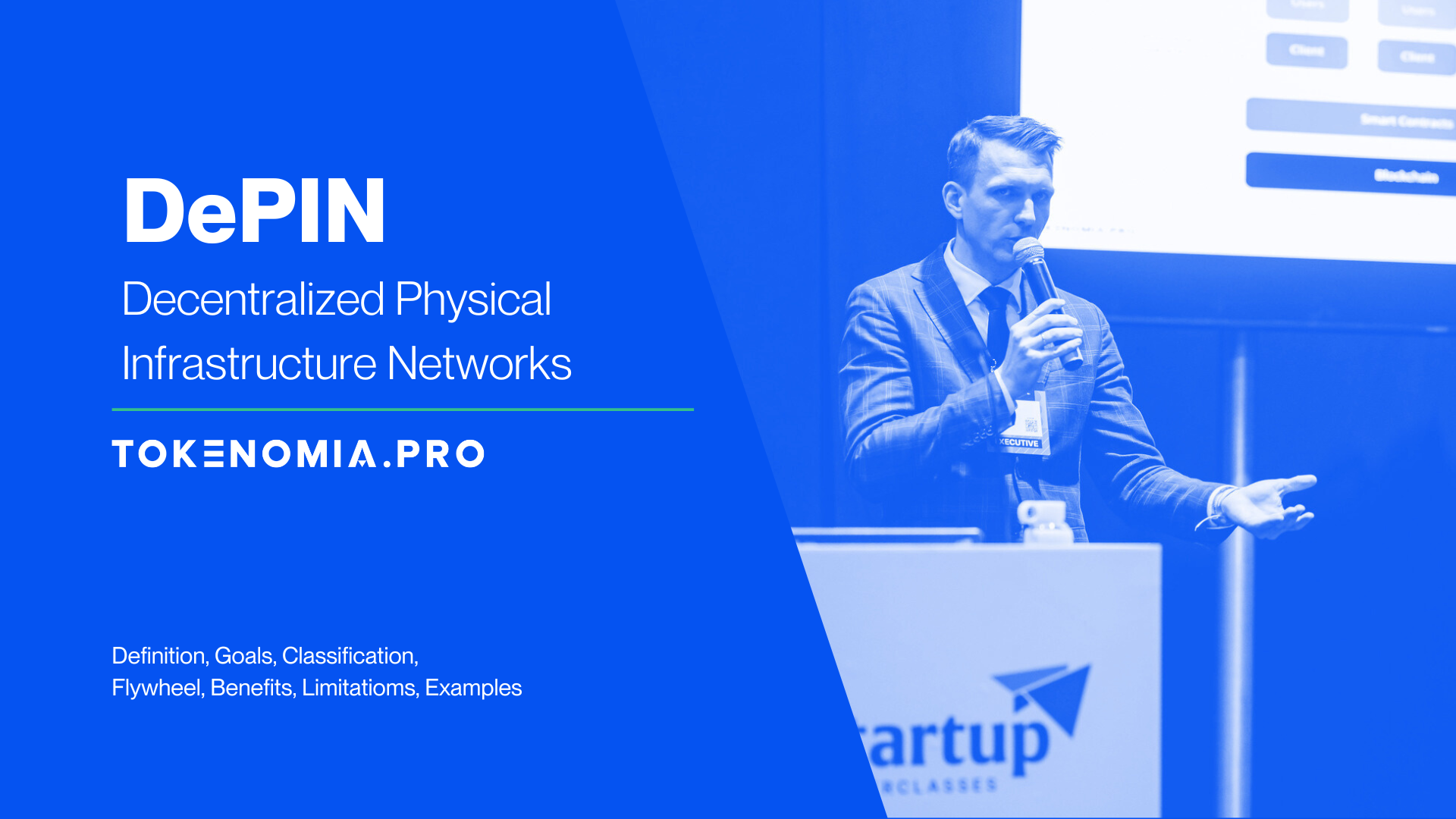
The crypto world is characterized by a breakneck pace of development, innovation, but also rapidly emerging and fading trends. One of the newest trends currently is DePIN, which stands for Decentralized Physical Infrastructure Networks. But does it have a chance to stay with us for good?
Definition
DePIN is an innovative network based on blockchain technology that incentivizes users to share their resources and real-world devices, such as processors, storage, or cameras, by rewarding their engagement with tokens. By leveraging the concept of the Internet of Things (IoT), DePIN can also integrate various devices equipped with sensors and detectors, creating a decentralized version of the network in the physical world.
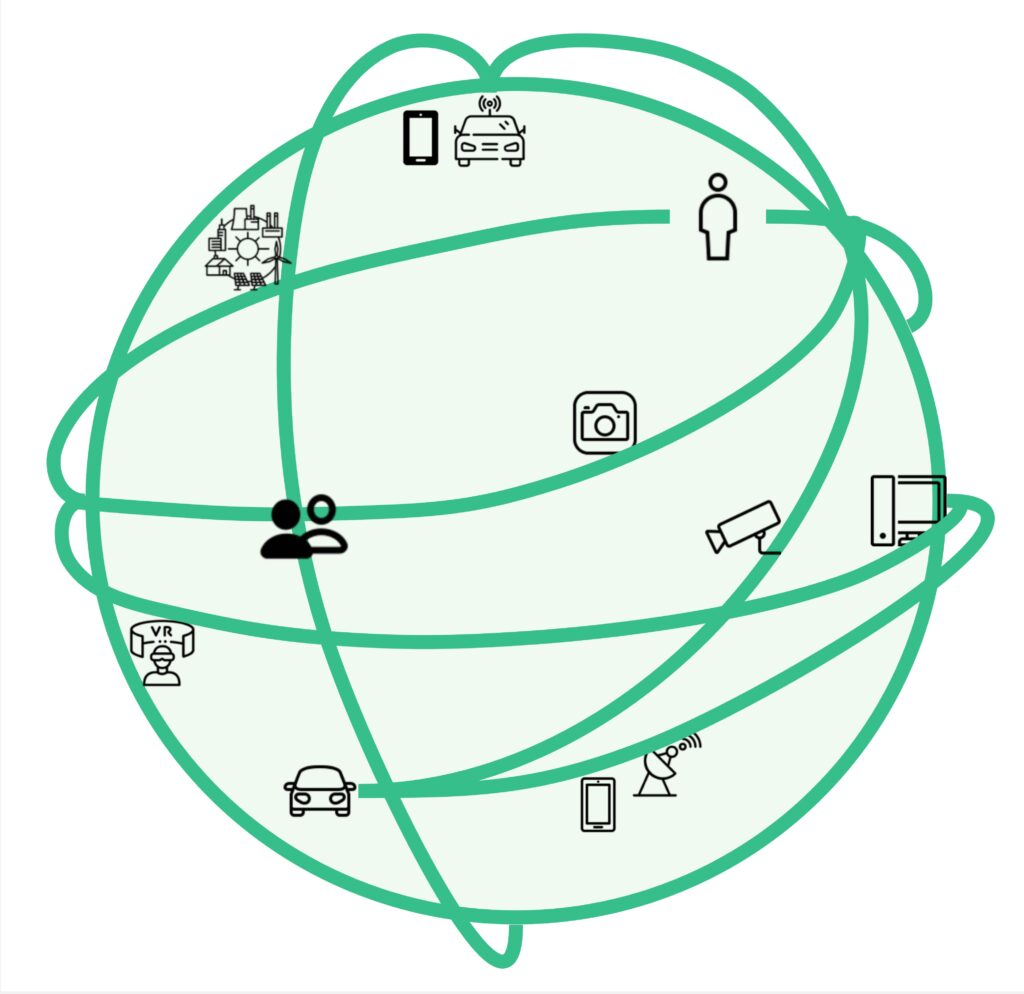
This technology aims, among other things, to address issues related to the increasing amount of data and server load by utilizing distributed infrastructure. The key idea is to reverse the traditional model in which corporations invest in building and maintaining physical infrastructure. In the case of DePIN, there is a paradigm shift, where users are encouraged to build a broad network and share it with companies for appropriate compensation.
Goals of DePIN
The goal is to create a decentralized infrastructure that provides diverse services and data, with network members responsible for their quality. The entire collaboration is based on mutually accepted cooperation consensus, sometimes in the form of smart contracts designed according to the project’s needs. This reduces the need for traditional regulatory bodies and traditional physical infrastructure.
Thanks to the decentralized networks of users, the infrastructure becomes resistant to censorship and manipulation. Fundamental components of DePin are supply-side participants, projects leveraging blockchain technology, and end-users or companies who use resources.
This innovative concept aims to bring real benefits in DePIN space, particularly in sectors such as data storage providers, wireless and sensor networks, or energy, through more efficient resource utilization, reduced network construction costs, and cooperation.
Highlights
- Messari
The need to systematize knowledge about DePIN has sparked Messari’s interest. Their goal is to provide transparency and education about space in Web3. Therefore, the “State of DePIN 2023” report was created. This technology was presented there in a comprehensive way. The Messari team organized and presented the narratives created in web3 about DePIN and showcased its scale. Massari lists DePIN as one of the top 10 trends in peer-to-peer infrastructure in 2024.
- Name
Although the concept of DePIN has only recently emerged, related projects have been in the market for several years. It is worth noting that this trend may also be known by other names, such as EdgeFi, Proof of Physical Work (PoPw), or Token Incentivized Physical Networks (TIPIN). While this concept has only recently gained prominence when the industry achieved consensus on its name, the concept itself dates back to the early days of the blockchain era.
If we define DePIN simply as rewarding ordinary users for sharing their devices and time in the form of tokens, an example could even be Bitcoin. However, it is not always officially associated with this narrative.
- Solana
DePIN is strongly associated with Solana, mainly because many projects related to this concept have found their place on this network. Among them, we can find HONEY (Hivemapper), IOT (Helium IOT), Helium Mobile (Helium Mobile), HNT (Helium Network), RNDR (Render Network), Arweave, DIMO, IOTX (IOTEX), Streamr (DATA), WIFI Map, and many others.
Solana’s main advantage in the context of DePIN projects is the ability to establish transaction fees depending on the current market situation and the network’s ability to process a large number of transactions quickly. This is particularly important for projects of this kind, as they require swift action and minimal delays.
Classification
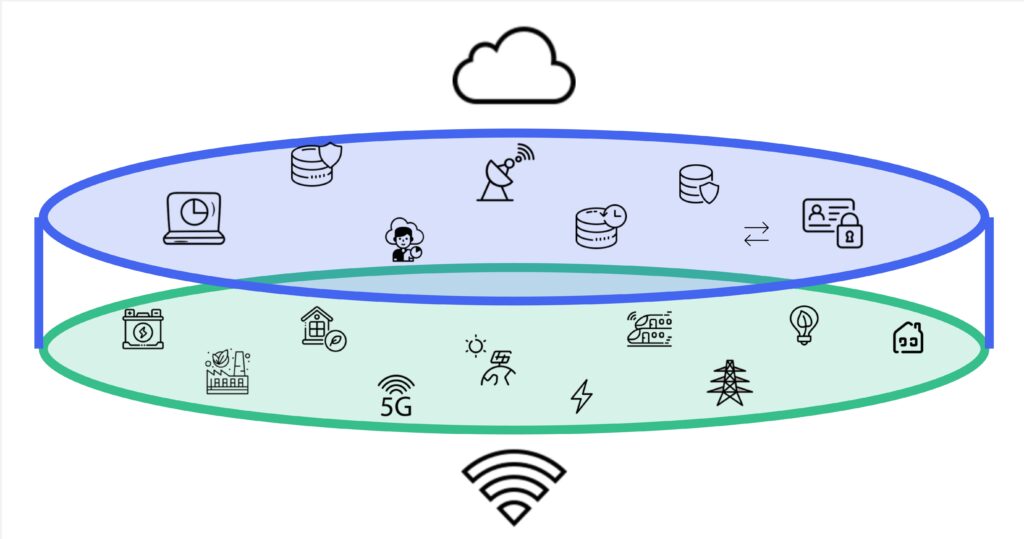
Messari classifies DePIN projects into two main categories, depending on whether they offer physical or digital assets:
Digital Resource Networks (DRNs): These are primarily cloud computing services that encourage using digital resources such as data storage or processing. It is a network infrastructure that provides digital resources, including broadband networks, data storage space networks, and computing networks.
Physical Resource Networks (PRNs): These are protocols that encourage service providers to utilize local hardware to provide real-world services, such as in the fields of mobility, energy, or communication. Depin developers provide WiFi, 5G, VPN, geospatial data, information sharing, and other services through globally dispersed hardware.
DePIN flywheel
The flywheel concept of DePIN projects, proposed by Messari, illustrates how DePINs motivate people to build physical infrastructure for the use by others without incurring substantial initial investment costs, as in traditional business models. Web3 enthusiasts note that tokenization allows globally distributed individuals to launch networks directly and trustfully collectively.
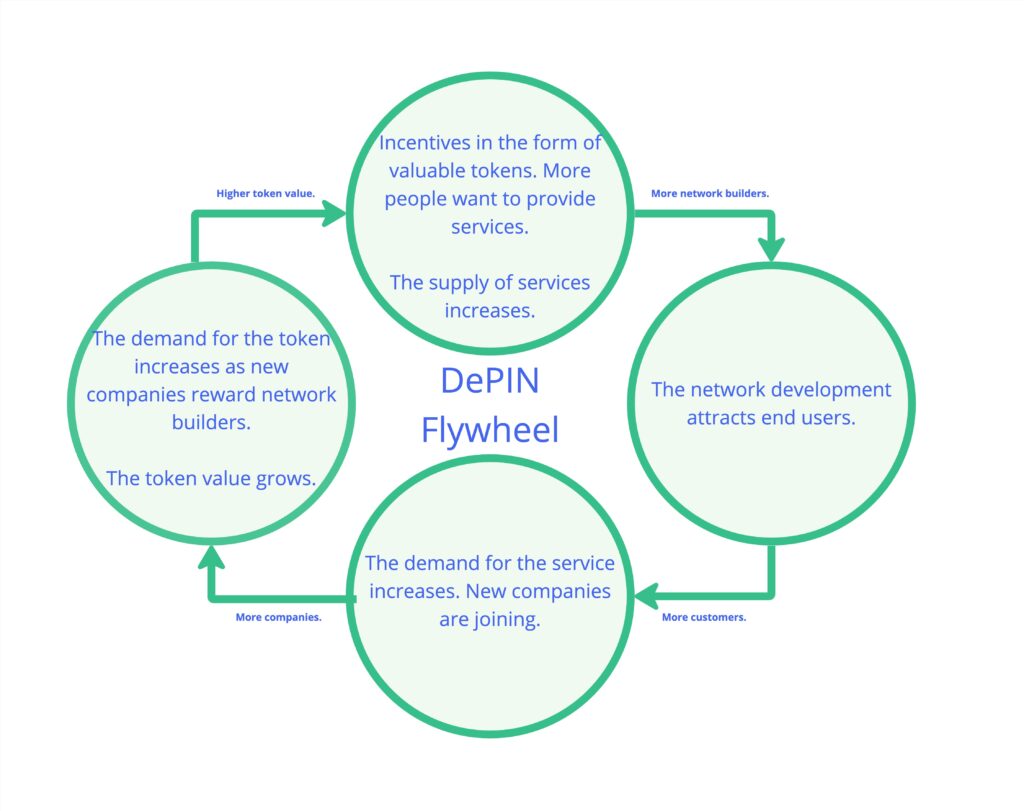
- Rewards in the form of token incentives for participants on the supply side to deploy infrastructure.
Tokens attract people to install or use hardware that provides services to other entities. Suppliers receive compensation for providing new or existing hardware to individuals seeking goods or services that this equipment offers. Since there are no intermediaries, those transaction are often cheaper and faster.
- As the supply increases, the network attracts programmers, product creators, and end-users.
After building the basic infrastructure, the network attracts users. These users pay for using the network and support further growth on the supply side.
- Fees generated by end-users using network services attract more service provider companies who want to use the network.
New providers see an opportunity to increase their income by providing their services using a decentralized physical infrastructure network. As a result, a larger number of service providers enter the ecosystem, increasing its diversity and availability.
- There is an increasing demand for tokens to reward new network builders, so the token value increases.
In the best case, this initiates a cycle where increased demand drives increased supply, reflected by token rewards that gain value due to growing demand.
Benefits of DePIN
Faster scaling and lower costs:
Utilizing existing DePIN builder’s resources reduces initial costs, enabling faster scaling and lower expenses compared to traditional companies. Crowdsourcing and customer competition further enhance process efficiency. Example: NATIX, thanks to the involvement of thousands of users, maps the world faster than any centralized platform ever before, even surpassing Google Maps.
Social approach to the economy:
Users can share the majority or all of the profits generated by a decentralized physical infrastructure network. Participation in the DePIN networks promotes a more social form of economy. Collective ownership of infrastructure, results in greater involvement and benefits for whole community. Example: ELOOP allows anyone who uses Tesla car rental to earn profits through profit sharing.
No top-down access control:
DePINs do not require permission to join the network, as it is in centralized entities, making them more resistant to censorship. They are open, democratic, and accessible to all. Example: Web3 taxi developed by bloXmove provides full transparency of services to drivers and passengers.
Greater transparency:
DePIN projects based on open sources provide clear knowledge of operating principles and shared data. By using cryptocurrencies, they also provide pseudo-anonymity and data control. Example: The Silencio network collects global noise pollution data and makes it available to everyone.
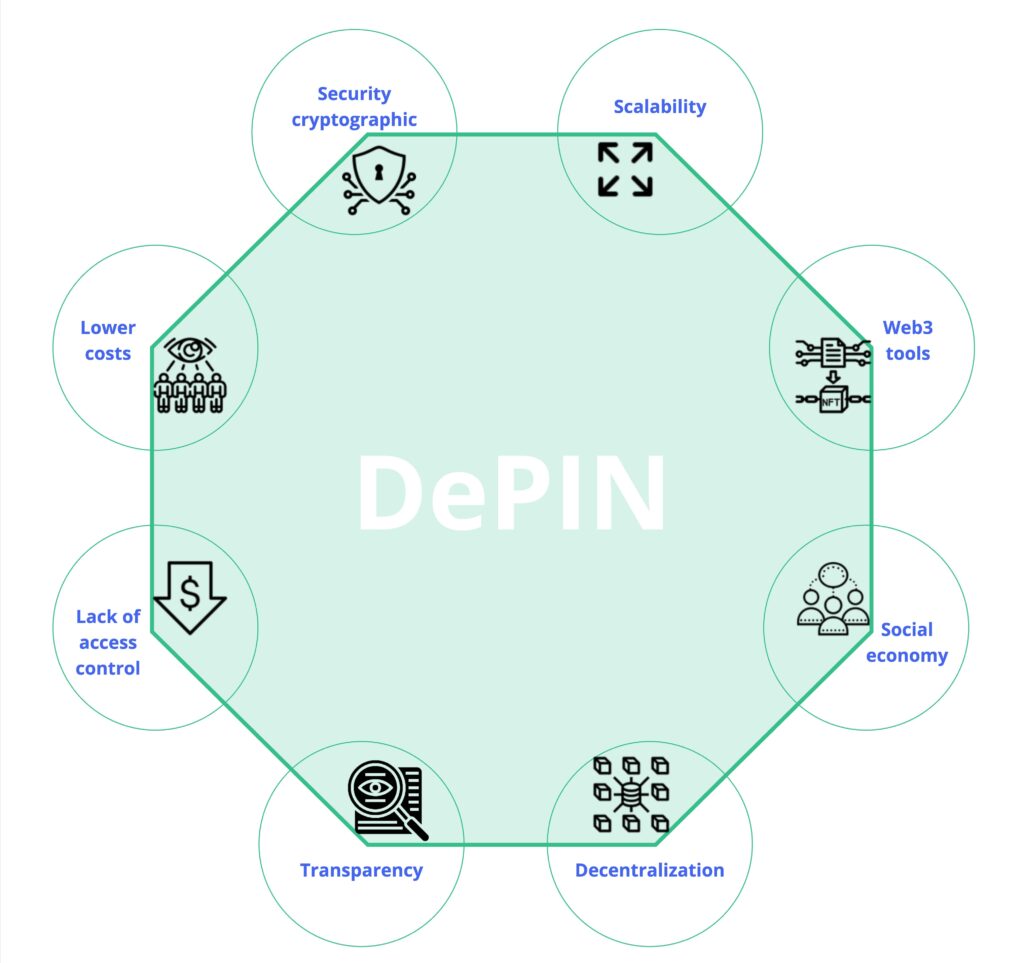
DePIN vs Traditional Economic Models
Low capital and operational costs:
By engaging the community in maintaining infrastructure, DePINs operate at lower costs than traditional companies, which have to invest billions in infrastructure, deploy hardware, and employ a large number of workers.
Secure peer-to-peer payments:
Using blockchain technology along with appropriate consensus enables secure payments in a decentralized manner without intermediaries and oversight.
Access to Web3 tools and DeFi services:
As native to Web3, DePINs allow network participants more direct access to various tools and services, which can open up new sources of revenue.
Lowering entry barriers:
With reduced capital requirements upfront, DePINs bring new competition in various industries, stimulating innovation.
Limitations
Despite advancements, there is no certainty that DePIN solutions will become widespread. There may be issues and drawbacks that arise, halting further development or leading to centralization, which could limit the benefits of decentralization.
Competition in traditional sectors is immense, involving the world’s largest corporations that have invested billions in building their own infrastructure. DePINs must compete with these giants, which can be challenging due to their resources and experience.
Not everyone is familiar with operating devices and configuring them to participate in the DePIN network. Providing adequate education and ease of use is necessary, which can be a challenge.
Maintaining such extensive networks requires continuous engagement, often from thousands of individuals. Additionally, the time needed to build applications and generate demand is longer than for consumer applications, which can lead to frustration among investors and participants.
Regulations can pose a significant barrier to access to the network or question the legality of such participation. Legal frameworks may be unclear or unfavorable to new business models, which can limit the development of DePINs.
As a result, breaking through existing competition will require more effort than in sectors of Web3 with more direct customer interaction.
Examples
Cloud and storage networks are one of the dominant categories in the DePIN sector map. Experts predict that they will become the main narrative of DePIN in 2024. In addition to them, promising sectors of development are wireless, sensory, and energy networks.
In Tokenomia.pro experience, we see three categories of depin clients. The first one is already familiar with the crypto world and is building a depin network as a main project. The Second type is already a functioning online business, most likely related to the crypto world, for example, the on-chain analysis platform. The case here is that such a client would like to leverage decentralized physical infrastructure networks to delegate maintenance of infrastructure and have more time and resources to focus on their main domain – which is analytics. The third one is a highly technical project without experience in web3 and token incentives mechanisms seeking help mapping their technical solution into the decentralized physical infrastructure.
Lukasz Szymanski, CEO Tokenomia.pro
Check how we can help you with your DePIN project: https://tokenomia.pro/blockchain-consulting/
Cloud services and storage networks: file storage, relational databases, CDN networks, and VPN networks.
In the classical approach,the problem may include a lack of resilience and proper security on servers against data theft, long distance from the user to the server resulting in delays, high fees imposed by corporations for data storage, environmental burden of maintained servers, and their low performance.
In the DePIN narrative:
Filecoin – a decentralized cloud connected with a distributed peer-to-peer network protocol (IPFS), cryptographic security, and a large dispersion of remote storage, aiming for a more efficient and secure network, free from corporate control. The platform connects those needing storage space with users with excess capacity on their hard drives.
Akash – an open network that allows users to buy and sell computer resources securely and efficiently. It is the first blockchain to enable IBC communication with the Cosmos Hub, allowing seamless connections to other IBC-compatible blockchain networks.
Arweave – an ecosystem for building decentralized web applications, offering user interface hosting, database queries, and domain name services – all completely decentralized. This decentralized model allows the building of web applications with blockchain properties: durable, neutral, and transparent.
Sia – a decentralized cloud storage platform secured by blockchain technology. The Sia storage network utilizes unused hard drive capacity worldwide to create a space that is more reliable and cheaper than traditional cloud storage service providers.
Storj – its decentralized data storage structure consists of several steps. Objects are automatically encrypted using AES-256-GCM encryption, then split into pieces that cannot be distinguished from pieces of any other object. Later, they are individually distributed to uncorrelated nodes worldwide, and to retrieve downloadable data, only 29 pieces of the object are needed.
Decentralized wireless network: WIFI, 5G, LoRaWAN – Internet of Things.
In the classical approach, wireless networks have limited network availability in isolated locations, a high energy burden of network maintenance, and susceptibility to interference.
In the DePiN narrative:
Helium – strategically placed hotspots provide kilometers of wireless network coverage for millions of devices in two wireless standards: LoRaWAN and cellular. Users sharing their devices are rewarded with tokens. LoRaWAN hotspots are extremely energy-efficient, consuming only 5 watts of power. This innovation quickly attracted attention and partnerships for various applications, including weather tracking, air quality monitoring, and GPS integration.
Wifi MAP – provides a map of free Wi-Fi hotspots based on information from over 100 million hotspots worldwide, shared by members of the WiFi Map community, rewarded with tokens. The VPN service provides a secure Internet connection and helps bypass regional restrictions, ensuring privacy and security on the Internet.
Metablox – provides globally roaming enterprise-class WiFi, providing uninterrupted, cost-effective to Web3 and the Metaverse compared to cellular services, as well as increased network security.
Sensory networks: devices connected through sensors that collect real-time data from the physical world.
In the classical approach, there is a high cost of establishing and maintaining sensor networks, location limited by financial or workforce capabilities, and company costs for sensor operation and maintenance.
In the DePiN narrative:
Hivemapper – a project aiming to decentralize mapping services in the real world, using car cameras to create a constantly updated road map that illustrates the appearance of a given street and collects data about the location of items such as road signs or traffic lights. This design project involves real-world devices to develop more efficient mobility networks.
NATIX Network -uses mobile phones, drones, car cameras, or stationary IP cameras to gather information about roads and traffic. Users can run NATIX software, provide metadata, and receive tokens. Then, this data is sold to companies for their use and analysis.
DIMO – is a virtual place for exchanging information about vehicles. It offers car owners the opportunity to earn money from their vehicle and driving data. Then, developers and companies can use them to create better-matched applications and mobile services.
Silencio – aims to combat noise pollution. This is an example of a DePIN application that allows users to share the ambient sound level (dBA) in their environment and earn tokens. Silencio aims to collect hyper-local and real data from its users, which can be commercialized for use in various industries, including academic research and hospitality, insurance, real estate, and urban area management.
Petastic – is a decentralized network where pet owners share data about their pets, thereby training an artificial intelligence model. As a result, they receive personalized advice and tokens in exchange for data and dedicated interaction with AI over time.
Energy networks: Connect dispersed energy sources to create a more resilient and efficient energy network. Creation of a network of power grids responding to users’ actual demand.
In the classical approach, Huge energy losses, uneven distribution, lack of effective green energy storage solutions and high entry fees into the energy sector.
In the DePiN narrative:
bloXmove – is utilizing blockchain components, it combines cutting-edge technology with industry solutions in security, automation, and transaction efficiency between businesses. It deals with redistributing generated green energy. Electric vehicle batteries are used as a storage of this energy.
Starpower – connects blockchain infrastructure and IoT technologies to combat climate change. Through a network that connects personal and commercial energy devices, it rewards participation with $STAR tokens and reduces greenhouse gas emissions.
Glowgreen – a sustainable development project that rewards solar farms allocating 100% of their revenues to building future solar farms. It enables the creation and operation of solar farms, especially in areas where it wouldn’t be profitable without incentives. Through partners like WattTime, it tracks real-time interactions of solar panels with the grid to calculate precise carbon offset credits.
Energy Web – A global nonprofit organization aiming to accelerate the energy transition by developing and deploying open-source Web3 technologies that help companies unlock business value from clean and distributed energy resources. Widespread adoption of those solutions can relocate excess energy so it is not wasted.
According to Messari, in the future, we can expect more projects aligned with the DePIN concept, which will intersect with sectors such as artificial intelligence (AI), memetic cryptocurrencies (Memecoins), the gaming industry, and privacy protection.
Conclusion
The final observations regarding DePIN are extremely promising. We see more and more companies embracing this technology, indicating growing enthusiasm and trust in its potential. This dynamic tool becomes a field for continuous optimization, responding to the demand for more efficient solutions. Looking at the scale and number of projects fitting into this narrative, as well as media interest, it seems that DePIN still has a lot to offer in the future. However, in a world of rapidly changing trends, we cannot rule out the emergence of a new narrative that leaves previous trends far behind.
Let’s talk about DePIN
The best first step is to talk to our consultant. During a free consultation, you can check the consultant’s competences and look for initial solutions to the challenge that is currently most important for your project.
Let's Collaborate
Whether you have questions, collaboration ideas, or just want to say hello, we're here and ready to connect. Your inquiries are important to us, and we look forward to engaging in meaningful conversations.
